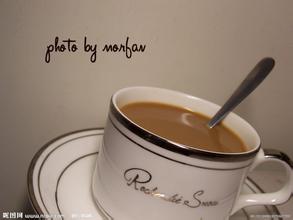Coffee roaster development history Capsule coffee machine introduction
In the early days, people generally used iron pot to stir-fry coffee beans. after coffee was introduced into Europe, Europeans used Turkish iron pot to stir-fry beans, and later invented hand-operated rotary baking, which could bake several pounds of beans at the same time, which was used by some coffee shops. In the 1860s, large roasters began to come out, and the use of blower to cool baked beans in 1867 gave birth to the development and innovation of large roasters. At the end of the 19th century, the advent of hot air roaster greatly improved the speed and efficiency of coffee roasting, making it possible to produce more in large quantities. In the 20th century, with the combination of roaster and electronic, the roaster was improved to be more precise, and the fully automatic roaster appeared with more advanced functions. in the 1960s, brand packaged beans dominated the market. But there are also problems in mass roasting: ordinary raw beans, in order to maintain excessive shallow baking, lack of freshness caused by the lack of flavor, since the 1980s, a "boutique coffee movement" was launched in the United States. It advocates people to buy boutique raw beans, home baking, drink fresh coffee, pursue quality and taste, and home roasting begins to receive attention. At the same time, the pursuit of coffee quality has also forced some big roasters to adopt higher quality beans to ensure roasting quality. After coffee was introduced into Europe in the 18th century, Europeans also used the Turkish style to stir-fry coffee until black. Later, because of geographical and cultural differences, Europe was divided into shallow baking schools dominated by Nordic, German, British and Scandinavian countries and deep baking schools dominated by southern Europe. The former usually bake the beans to city--full-city, while the latter generally bake them to the same depth as italy,french. Accordingly, the North American continent, which was later dominated by immigrants from northern Europe, also followed shallow baking, while Latin America, which was dominated by immigrants from southern Europe, was popular in baking. Until the mid-19th century, most of Europe used iron pots or ovens to bake beans at home, and later invented small roasters that use closed iron buckets instead of iron pans and put them on a fire to manually control, and can bake a few pounds of beans at the same time. Used by some coffee shops. With the advent of large baking machines in the mid-19th century, large quantities of baked beans became possible. After continuous innovation after the advent of large roasters, electronically controlled precision machines have appeared in the first half of the 20th century, and machines that can continuously bake 5000kg every hour have been developed. The emergence of large bakers has changed people's own baking habits. Buying packaged baked beans or coffee powder to cook directly at home facilitates the fast-paced life of modern people.

Important Notice :
前街咖啡 FrontStreet Coffee has moved to new addredd:
FrontStreet Coffee Address: 315,Donghua East Road,GuangZhou
Tel:020 38364473
- Prev

Description of the Flavor of Robasta Bean Coffee Powder introduction to the varieties of Coffee trees
The Congo, which originated in Africa, has a yield of 20% 30% of the world's output, which is suitable for lowlands below 500 meters. It has strong adaptability to the outside world, can resist bad climate, resist diseases and insect pests, and can be allowed to grow in the wild. It is a kind of coffee tree that is easy to cultivate. It is generally used to make instant coffee with strong adaptability to the outside world. It can resist bad weather and resist diseases and insect pests.
- Next

Requirements for Natural Weather conditions in the method of planting conditional Coffee beans in Guangdong, China
Coffee tree evergreen leaves, the leaf tip is more pointed, and is two opposite groups. The surface of the leaf is dark green, the back is light green, and the blooming flower is pure white. There are five stamens and one pistil in the flower, and the petals are usually five, but some have six or even eight petals. The flowers will give off a jasmine-like fragrance, but the flowers will wither in about three or four days. The fruit has just begun with the leaves.
Related
- Beginners will see the "Coffee pull flower" guide!
- What is the difference between ice blog purified milk and ordinary milk coffee?
- Why is the Philippines the largest producer of crops in Liberia?
- For coffee extraction, should the fine powder be retained?
- How does extracted espresso fill pressed powder? How much strength does it take to press the powder?
- How to make jasmine cold extract coffee? Is the jasmine + latte good?
- Will this little toy really make the coffee taste better? How does Lily Drip affect coffee extraction?
- Will the action of slapping the filter cup also affect coffee extraction?
- What's the difference between powder-to-water ratio and powder-to-liquid ratio?
- What is the Ethiopian local species? What does it have to do with Heirloom native species?

